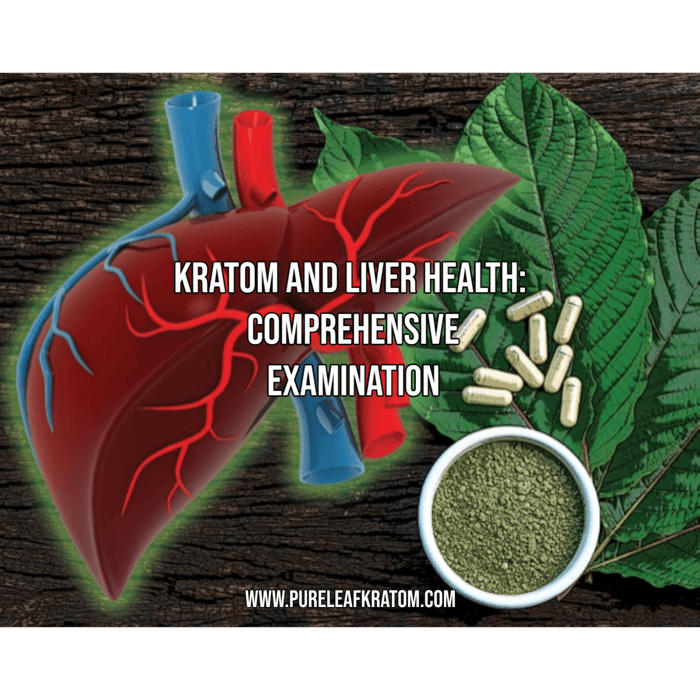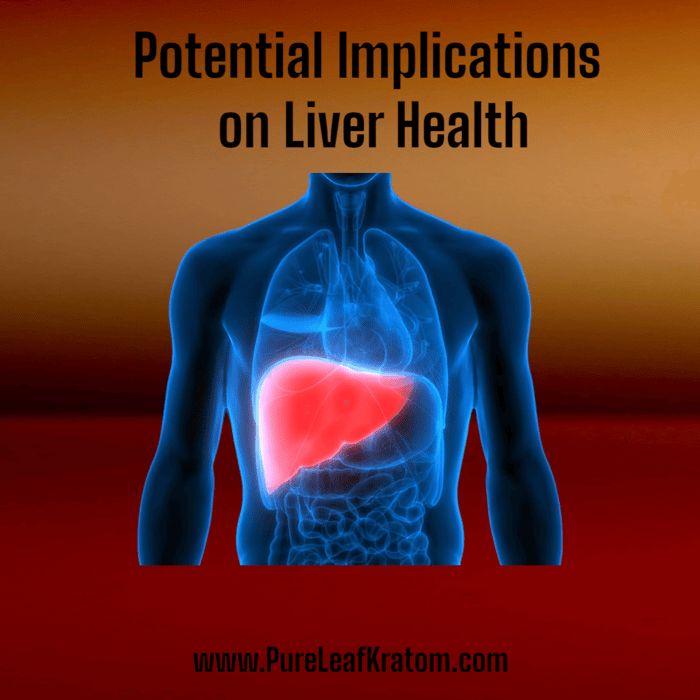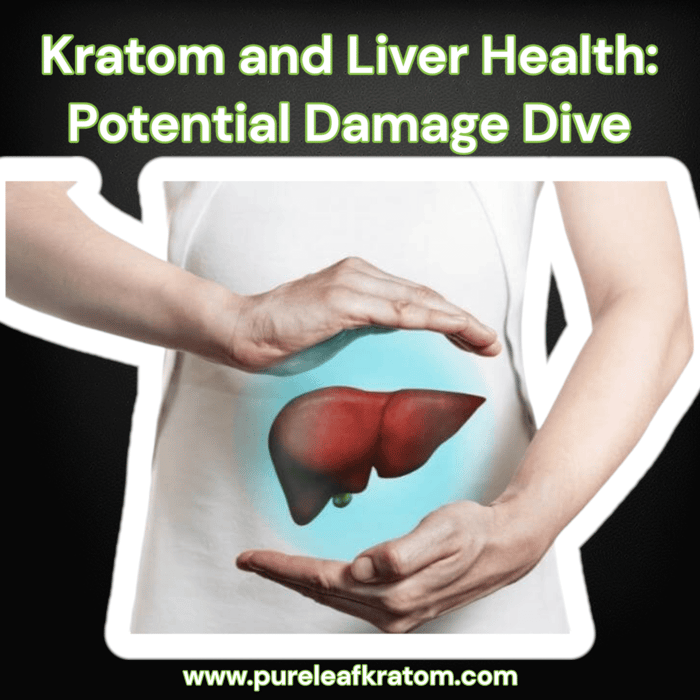
'Is Kratom Bad for the Liver? A Deep Dive into Potential Liver Damage Associated with its Use'
Understanding Kratom: A Brief Overview
Kratom, scientifically named Mitragyna speciosa, is a tropical tree indigenous to Southeast Asia. Notably, it thrives in Thailand and Malaysia's humid and hot climates. Amid its towering height between 50 to 100 feet, what particularly stands out is its dark green foliage, which can reach measurements of 7 inches in length and 4 inches in width when in full maturity. As part of the coffee family, Rubiaceae, Kratom's pivotal active ingredients are indole alkaloids, namely mitragynine and 7-hydroxymitragynine. These compounds significantly influence the user's liver opioid receptors, thereby leading to specific effects, with potential implications for liver damage.
$12.95 Club 13 Kratom Liquid Extract 215mg Introducing the premium Club 13 Kratom Liquid Extract 215mg, specially crafted for experienced kratom enthusiasts who demand maximum potency...… read moreClub 13 Kratom Liquid Extract 215mg

Traditional and Modern Usage of Kratom
In its native lands, Kratom leaves have been traditionally implemented in their medicinal practices. Typically, these leaves are either chewed directly or brewed into a calming tea. With this method, locals have found relief from various ailments like chronic pain, fever, and diarrhea. Remarkably, it also aids in the problems associated with opioid withdrawal tandfonline.
Recreational Use of Kratom
Along with its medical applications, Kratom has found its spot in recreational usage news due to its psychoactive properties. These characteristics come from its unique blend of mild stimulants and opioids contained within the leaves. Recently, there's been a spike in its popularity in the United States and Europe, inviting more people to experience the world of recreational Kratom consumption. However, this has led to some concerns regarding its potential for dependence and abuse tandfonline.
Kratom for Chronic Pain Management
Chronic pain patients can find solace in the Kratom world due to its beneficial properties. The opioid-like effects of Kratom leaves offer a significant amount of pain relief, benefiting those who suffer from persistent pain tandfonline.
Kratom in Opioid Withdrawal Treatment
One of the most profound uses of Kratom is in the field of treating opioid withdrawals. Its unique impact on opioid receptors has proven its worth by reducing the harsh effects of withdrawal in affected individuals tandfonline.
Legal Consequences of Kratom Usage
Although Kratom provides a multitude of benefits, its legal standing globally is still helter-skelter. Owing to suspicions about its safety and abuse potential, certain regions have implemented indisputable bans on Kratom tandfonline. Nonetheless, back in Southeast Asia, regulation remains lacklustre, with Kratom leaves being freely sold in local markets emcdda.
| Country Name | Legal Status | Brief Explanation |
|---|---|---|
| United States | Legal at federal level, varies by state | Legal federally as of 2016. Some states have banned or restricted it, others have introduced legislation to regulate it. |
| Canada | Legal | Legally available but there have been some seizures by border officials. |
| United Kingdom | Legal | Sold as an herbal supplement. No regulation specific to kratom. |
| Australia | Banned | Banned in 2003 due to concerns over potential for abuse. |
| New Zealand | Legal | Legal to buy for those 18 and over. Classified as a supplement. |
| Germany | Legal | Available as an herbal supplement. |
| France | Banned | Banned since 1993. |
| Sweden | Banned | Classified as a hazardous substance. |
| Malaysia | Banned | Native country banned in 1943 due to perceived negative side effects. |
| Thailand | Banned | Banned in 1943 along with marijuana over concerns of abuse. |
| Indonesia | Legal | No regulations, used traditionally by laborers. |
Kratom and Liver Health – An In-depth Examination
As versatile as Kratom might seem in various applications, it's paramount to understand the potential risks involved – particularly its effect on liver health. So, is Kratom bad for the liver? Let's pull back the curtain on the available research and case studies that have identified potential liver damage often associated with its use.
Overview of Existing Research
Initial research into the potentially harmful side effects of Kratom on the liver had its roots in a handful of case studies. Based on the LiverTox data, Kratom has been linked to a few significant cases of acute liver injury, typically emerging 1-8 weeks after the onset of regular kratom use. The pattern of liver injury is usually cholestatic, impairing bile flow, or mixed, insinuating both cholestasis and hepatocellular injury. At least two dozen case reports have been published in this context showcasing the troublesome connection between Kratom and liver health. However, the underlying mechanism of injury remains unclear.
Moving forward, more recent studies reviewed 25 FDA database cases and 27 internet forum cases of Kratom-associated liver toxicity. Data forms a strong foundation, presenting evidence of similar health concerns as with initial studies – from symptoms like abdominal pain, jaundice, and itching, changing to more severe states such as dark urine and prolonged cholestasis.
Kratom-Related Case Studies
These case studies indicate a pattern of liver damage symptoms, predominantly showing cholestatic injury. However, they also reveal a concerning heterogeneity, with patterns suggesting both cholestasis and hepatocellular injury. It becomes alarming when some cases reach the severity of liver failure, requiring transplant.
Though it's clear that kratom carries potential for liver injury, the exact mechanisms of this toxicity remain elusive. Multiple theories posit that kratom's alkaloids may interfere with hepatic metabolism enzymes and transporters. However, we still lack definitive information on identified at-risk demographics or fully understood causes for such diverse reactions.
The Role of Dosages and Frequency in Liver Health Implications
It's important not to overlook the quantity and frequency of kratom usage when discussing its implications for liver health.
A case could be made for moderate use of Kratom. Some might argue that regular and restrained consumption poses a smaller risk. However, substantial risks should be considered while contemplating heavy and long-term usage. Partaking in excessive Kratom use can lead to very concerning symptoms, including elevated liver enzymes, which are an indication of liver damage. In some reported cases, this damage has become so severe that it led to liver failure, requiring a transplant. On this note, the frequency and quantity of Kratom use can significantly sway the nature and level of liver damage.
In conclusion, while the research linking Kratom to liver damage is based on low-quality human evidence from case reports, it does suggest a pattern of potential liver health hazards. Kratom could pose a tangible threat to user's liver health, with effects ranging from mild complaints to devastating liver failure. Therefore, whether consuming it for recreational purposes or pain management, user awareness, caution, routine checks, and further research are absolutely essential.
Krave Kratom Extract Shot Trainwreck
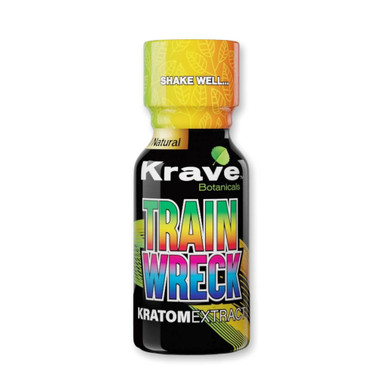
$7.95
Krave Kratom Extract Shot Trainwreck Step aboard the Kratom train and embark on an extraordinary journey with one of Krave's most popular extracts - the...… read more
Reported Cases of Liver Injury
Over the years, increasing reports of liver injuries related to Kratom use have raised concerns among the medical community. Liver injuries typically manifest within weeks of regular Kratom consumption, and the impact seems to escalate with both short and long-term usage.
Duration of regular Kratom use before liver injury
Short-term usage and associated risks
Interestingly, liver injuries have emerged after surprisingly brief periods of Kratom use. According to a case series reported on the Journal of Medical Case Reports, the median duration of Kratom use prior to injury onset was a mere 22 days. This implies that users may potentially face health risks sooner than anticipated.
Long-term usage and liver health impact
Conversely, the impact of long-term usage remains somewhat unclear, primarily due to the lack of substantial long-term studies. However, given the mounting evidence of liver damage in the short term, caution should certainly be exercised regarding regular, long-term use.
Types of liver injury related to Kratom
In the unfortunate scenario of liver injury, it often manifests in two common types, each with its unique complexities and symbiotic relationship with Kratom consumption.
Cholestatic liver injury
Primarily, Cholestatic injury is a prevalent form of liver damage linked with Kratom use. Simply put, cholestasis refers to the slowing or stopping of bile flow, an essential biological process. This might result in the build-up of toxins in the liver which can cause counteractive liver damage.
Mixed liver injury (cholestasis and hepatocellular damage)
Additionally, there have been instances of mixed liver injury involving both cholestasis and hepatocellular damage. This typically refers to liver damage that affects the liver cells (hepatocytes) and derails the bile flow simultaneously.
Symptoms of Kratom-induced liver damage
Identifying the signs of Kratom-induced liver damage can be crucial as early detection can prevent the escalation of liver injury. Some symptoms include fatigue, nausea, itching, dark urine, and jaundice, which are usually accompanied by unusually high serum bilirubin levels.
Severe side effects of Kratom use
Excessive and long-term use of Kratom can lead to severe side effects, extending beyond just liver damage.
Acute kidney failure
In rarer cases, Kratom has been tied to acute kidney failure - a severe condition that requires immediate medical attention. Unfortunately, the underlying causes and definitive symptoms remain largely speculative, further emphasizing the need for additional information and research in this field.
Bone marrow toxicity
Last but not least, there have also been legitimate concerns around bone marrow toxicity possibly associated with Kratom use. To clarify, this predominantly refers to a decrease in the production of blood cells, which can prove detrimental to users' health.
As the prevalence of Kratom use seems to be on an upward trajectory, there is an urgent need for more comprehensive research and tighter regulations, especially considering these potential health risks.
There are a number of prevalent myths surrounding kratom use and its impacts on liver toxicity. It's imperative to debunk these misconceptions in order to ensure people are fully informed about the potential hazards and benefit from scientifically accurate harm prevention strategies. Here, we discuss the major misconceptions and evidence that challenges these myths.
Assumed Self-Improvement After Kratom Discontinuation
A commonly held belief is that discontinuing the use of kratom will automatically lead to an improvement in liver health. Some cases seem to support this assumption. Temporary use of kratom, followed by its discontinuation, has at times resulted in improved liver function. However, painting this as a universal rule can be misleading. There are numerous other instances that demonstrate no such improvement. Therefore, it's crucial to understand that not all liver injury related to kratom may reverse with discontinuation. The severity and duration of kratom use, genetic factors, and individual health profiles can influence recovery times and outcomes.
Cholestasis Persists Even After Discontinuing Kratom
Contrary to popular belief, there have been cases where cholestasis has persisted long after the use of kratom was stopped. While kratom use is commonly linked with cholestasis, hat it's not something that necessarily goes away with the discontinuation of kratom. Ongoing harm to the liver may connect with underlying health conditions or concurrent use of other hepatotoxic substances. The long-term impacts of such persistence may include fibrosis, cirrhosis, and even liver failure in severe cases.
Differentiating Between Kratom-Induced Toxicity and Effects of Adulterated Kratom
In certain cases, the liver toxicity is not necessarily induced by the kratom itself. Rather, it might be due to other toxic substances added to the kratom product. Kratom available on the market today is not strictly regulated, therefore, the possibility of it being adulterated with harmful substances is high. Common adulterants include synthetic cannabinoids and opiates, harmful fillers, and even heavy metals, all of which can potentially cause liver damage. Therefore, it's important for users to be aware of the source and purity of their kratom to protect their liver health.
There has been a marked increase in Kratom use in the general population. As per available research, estimates suggest that there are currently 3-5 million Kratom users in the U.S alone, a number that continues to rise. The growth trend can be attributed to various factors, including Kratom's potential in managing chronic pain, depression, and opioid withdrawal, among other reasons.
Increase Among Specific Groups
Two significant user groups have been observed: those living with chronic pain and individuals with opioid use disorder.
Chronic Pain Sufferers
Chronic pain sufferers have shown a concerning increase in Kratom use. A recent study found that around 91% of Kratom users cited pain as the primary reason for its usage, attributing the drug's popularity to its perceived effectiveness in managing discomfort. However, it's essential to understand that the unregulated nature of Kratom presents its own risks, particularly since potential liver toxicity or injury can worsen overall health, leading to more intensified inflammation and pain.
K Shot Kratom Liquid Extract
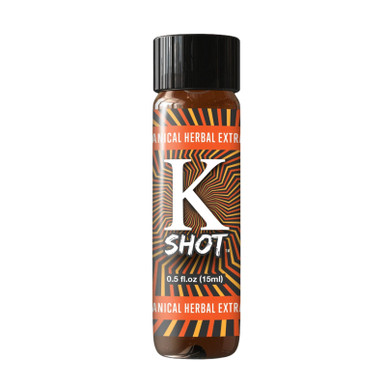
$11.25
Explore the remarkable potential of K Shot Kratom Liquid Extract, a meticulously crafted botanical supplement designed to enhance your overall well-being. Through an innovative extraction...… read more
People with Opioid Use Disorder
Kratom is also widely used by people sorting through opioid use disorder. Statistics show that about 41% of users indicate using Kratom as a means to reduce or entirely stop their use of prescription opioids or heroin. While Kratom may seemingly serve as a harm reduction strategy, the potential drawbacks and uncertainties, like liver health implications, point towards the need for more regulated usage and robust research.
The Need for Further Research
With the growing popularity of Kratom and the suspected linkage with liver damage, it is clear that there are significant gaps in the understanding of this drug. These gaps exist in the areas of Kratom's effect on liver metabolism, the degree of damage involved with short-term and long-term use, the correlation of liver toxicity with the quantity and frequency of use, and the potential risk of liver conditions such as cirrhosis, hepatitis, and fibrosis. To answer these questions, further in-depth studies need to be conducted to determine the potential benefits and harm of Kratom.
The Rise of Online Kratom Marketplaces
Parallel to the rise in Kratom usage is the expansion of the online marketplace offering Kratom. This potent herb, in spite of its potential liver health implications, is accessible to anyone with an internet connection, thereby leading to growing concerns about the legal and ethical implications surrounding its sale. With little to no regulatory oversight of these online sales, the ease of access increases the risk of contamination, misuse, and overuse – factors that could potentially heighten its detrimental impact on liver health.


